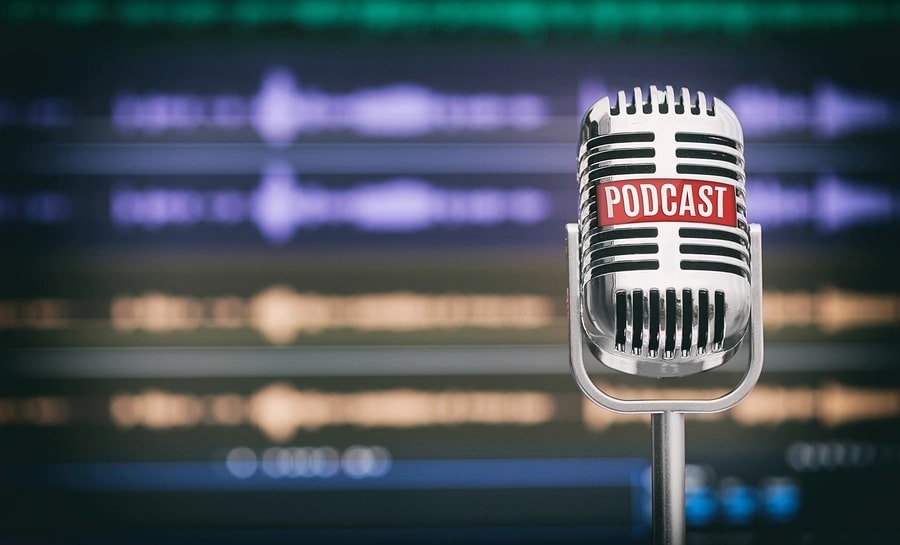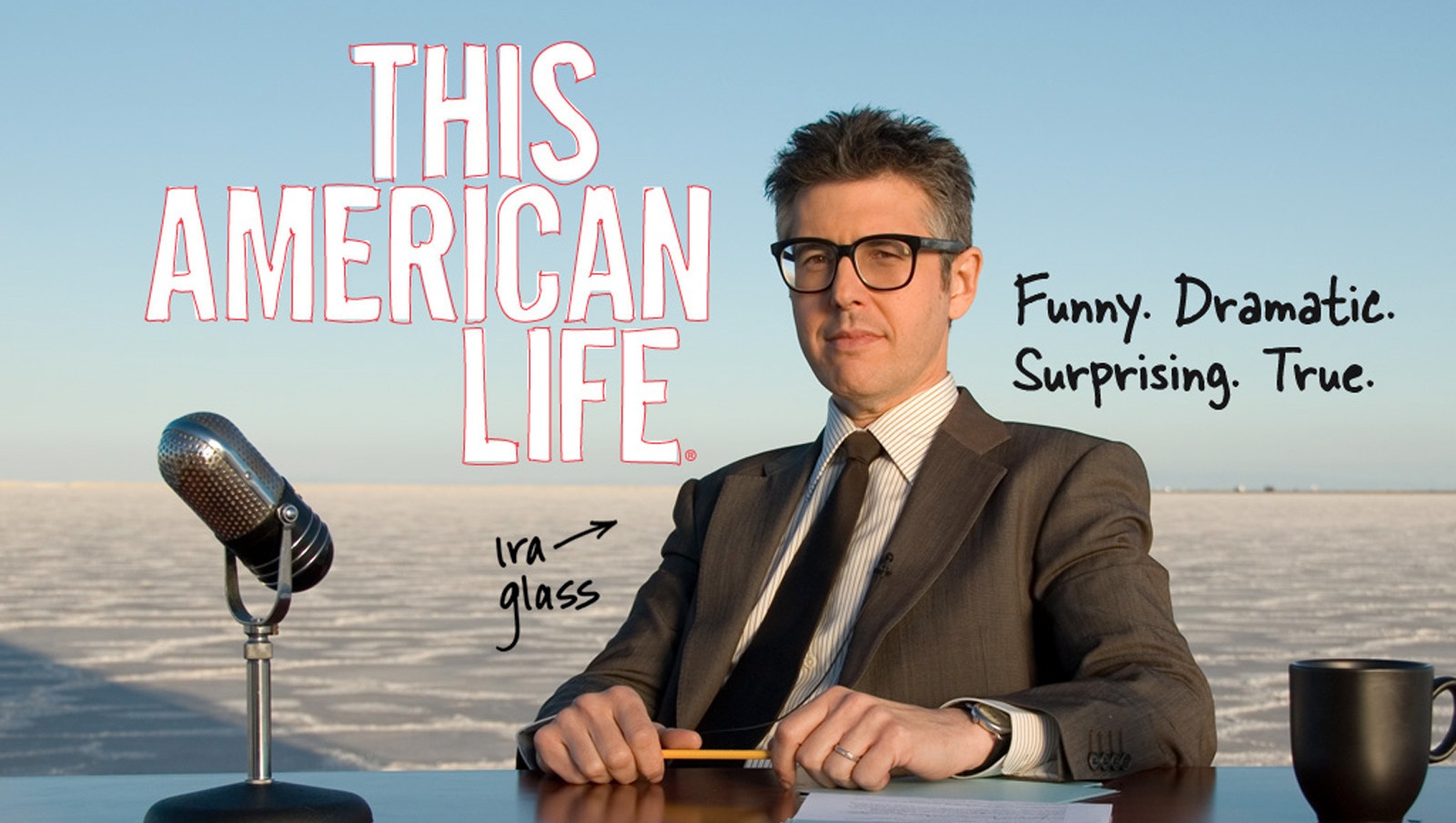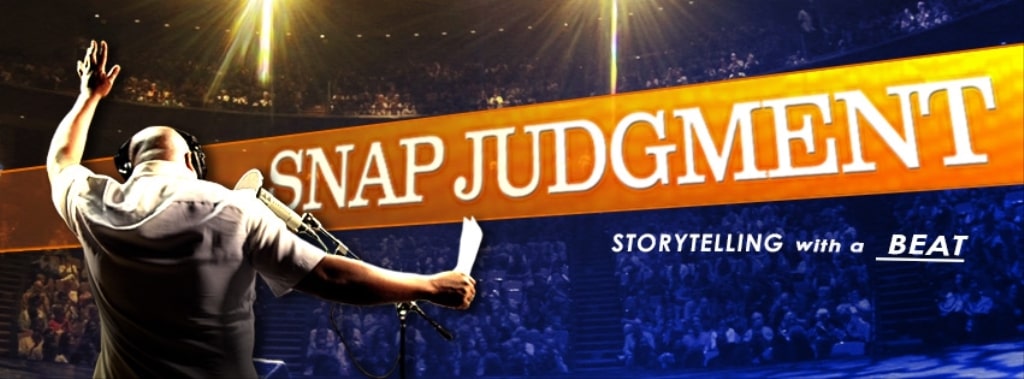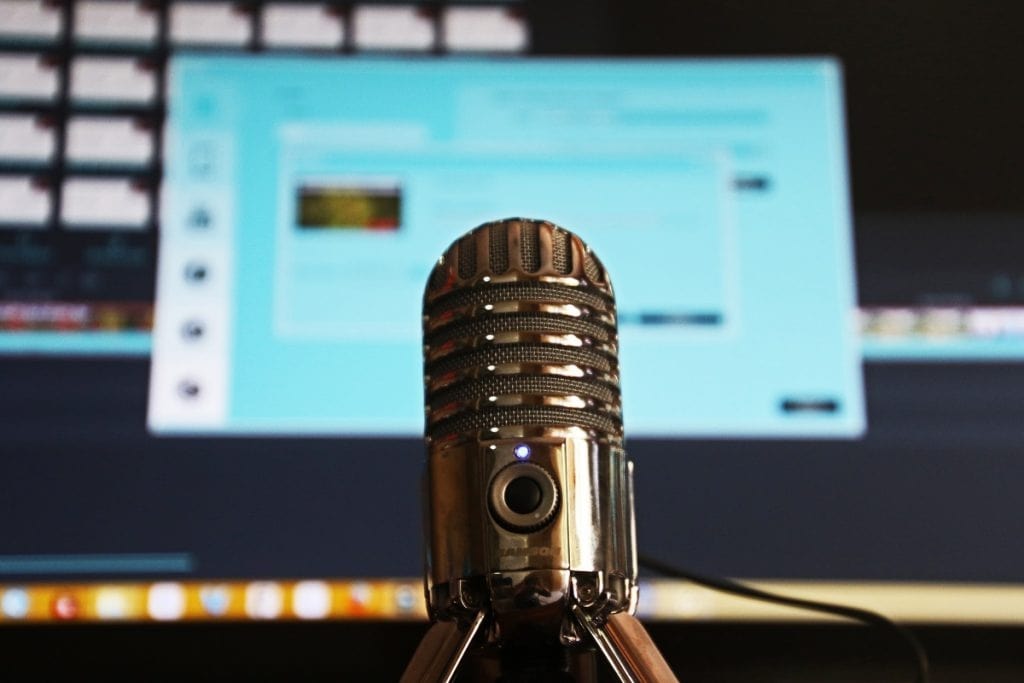What is a Podcast? A complete guide for podcasting beginners
In recent years, the term “podcast” and “podcasting” have been used interchangeably. And they’ve defined a whole new form of content adapting as well as advertising. Podcasts can be a great way to communicate with listeners and future customers personally. The way people interact through audio is more lively and interesting than written interaction. Also, podcasting can help build your reputation and position your name in your chosen niche.
But what exactly is the concept of podcasting? Fortunately, you won’t need much money or technical knowledge to learn how to start your podcast. In this article, we will drive you through some podcast elements, explain some different types, and give you some tips on how to start your podcast seamlessly. Let’s get started.
What is a Podcast?

A podcast is simply a form of digital broadcast available on the Internet. It contains an episodic series of audio or video files that can be subscribed through web syndication or streamed online with a computer or mobile device. The word “podcast” is the combination of iPod and broadcast, which was first mentioned by Ben Hammersley in a 2004 Guardian newspaper article when he came with some possible names for this new medium. However, the word was just named after Apple’s iPod and did not mean you must have an iPod to enjoy a podcast.
There are some critical pedagogical points about podcasts and podcasting that make them a currently trending tool for entertainment and educational purposes. First, it can be downloaded, copied, and listened to on the go while commuting or working, which doesn’t require full attention from the listeners. This offers an opportunity for flexible delivery of content such as learning courses.
Also, the use of audio in podcasting creates a sense of interaction in which information and knowledge can be transferred more lively. And with the use of podcasts, you can save quite a lot of money as it’s relatively easy and cheap to produce a podcast.
The potentiality of podcasting
Podcasting is booming in 2020. Podcasting statistics worldwide have proven a potential market for this audio format in the next few years. As of 2020, there have been more than 850,000 active podcasts and more than 30 million podcast episodes in over 100 languages. Nearly 51% of US households have listened to podcasts, with smartphones being the number 1 in-use medium. People access podcasts in various situations: while driving, working, doing household chores, walking around, working out, and several others.
There are strategic reasons for this tendency. Podcasts are more engaging as the audience is always kept in contact with the material of the site. Podcasts function as multitasking options, too — while cooking or driving, you can listen to a podcast. For blog posts or some kind of visual content, it cannot be done the same. And under proper implementation, podcasts can bring many advantages - new audiences, better engagement, more interaction.
Types of podcasts
The solo podcast

People open solo podcasts when they want to share their expertise and experience in a particular area to the audience. This type of podcast is formatted as a monologue run by an individual (you) throughout the talk.
Since you’re podcasting as an individual, your content is not limited to any categories. It can be opinion-based, Q&A, or news-transmitted based on your advantages and ideas. Since you’re doing solo, you can freely produce content of your preference, record and edit your podcast in your way. It’s easier to develop 1-1 connections with your audience and build your brand.
The conversational podcast

The conversational podcast, also known as a co-hosted podcast, is a form of podcasting where two or more hosts run the show. This type works best when you’ve already planned your podcasting show strategically and acquired business partners with the same visions.
Multi-host podcasts offer discussions with more than one perspective, which can entertain or bring values to listeners who enjoy debates and like to judge a problem from different perspective angles. And since there are more people, there will be more ideas, and you will be less pressured by producing engaging content. Also, the great chemistry among the hosts can help build a loyal audience or the so-called “fandom”. However, the biggest minus of this podcasting form is that it might be hard to equalize the priorities and arrange all hosts’ schedules.
In any case, if you do decide to co-host your podcast, we strongly suggest that you use audio creation tools that are team-friendly. For instance, Podcastle for Teams is specifically designed for those who have more than one person working on the same project. It helps you and your co-host access the same workspace, leave feedback for each other and comment on work-in-progress projects.
The interview podcast

As its name suggests, this type of podcast is where the hosts invite different guests for an interview in each episode. This format is quite common as it depends greatly on the guests’ performance and doesn’t require much groundwork. The most crucial step in the preparation process is to research your interviewees carefully to come up with an appropriate question list. Rather than academic or specialized knowledge, interview podcasts require more soft skills such as interviewing skills or negotiating skills to book the guests successfully.
Doing interview podcasts gives you more chances to reach your show to a broader audience thanks to your guests’ influence and diversify your episode content as different interviewees have different stories and viewpoints to share. The biggest downside, unfortunately, also lies in the guests, as booking influential speakers can be difficult, not to mention that you’ll have to do in-depth research about them and work around their tight schedule.
The story-telling podcast

This podcast type is basically you telling the world about your story, whether inspiring or tragic. But to make your story-delivering podcast enjoyable, it requires a whole team of back-stage people, including journalists, scriptwriters, editors, producers, and sound designers. Shows like this rely heavily on audio editing, so they usually contain several audio elements such as phone conversations, behind the scenes audios, ambient sound, etc. Overall, this form of podcasting is hard to nail unless your story is exceptional, and you have a team with full support to leverage your story.
Hybrid podcast

The hybrid broadcast is the mixture of all the podcasting types previously mentioned, which enables your creative juices to flow seamlessly. A hybrid podcast tends to have a set host in advance, but usually, there will be other guest hosts or special speakers featuring on the show. Normally, it starts with a monologue from the main host, then develops into panel discussion or interviews with other speakers. But in fact, you can design your podcast however you want - probably kickstart with a small discussion then close with an interview, or present your personal opinions first then let others join. Generally speaking, you can mix and match your content and feature different podcast types depending on what suits your show and how you can engage your audience.
How podcasting works these days
Podcasting is now exempt from government controls, which means podcasters do not need to purchase a license to air their programming or comply with the laws of the Federal Communications Commission (FCC). That means everything, including the sexually explicit content. However, copyright law still extends to podcasting, so podcasters can legally license their work.
Though many corporations and large broadcasting companies have ventured into the medium, most podcasters are amateurs who broadcast from home studios. Since podcasters don’t focus on ratings as radio stations do, podcasts can vary from the sublime to the dumb to the excruciatingly boring subject matter. Usually, podcasters aim to appeal to a small audience of listeners. Through continuous podcasting on one topic, podcasters demonstrate their knowledge on the subject and attract a loyal and dedicated audience of listeners.
Many businesses are seeking to turn podcasting into a viable business by performing advertisements and sponsorships during its audio broadcasts. Television networks, such as BBC or National Public Radio, have also got into the game. Some corporations even set up their own podcasts to engage more customers.
Things to prepare before starting a podcast
Podcast name
A podcast name should give potential listeners a brief understanding of the podcast’s content. If you’re looking for a podcast on a certain topic, the name alone will say whether you come to the right podcast. By using the exact topic in your name, you can increase the probability of discovering a particular keyword. But ff you are a company, you would most likely want your corporate podcast to represent your brand.
Hostname
Clearly, this can be your name or the name of your business. But to get a higher ranking, you should add some keywords that specifically define your expertise, for instance: your name + your niche + blogger. People can find you more easily with this keyword search.
Podcast Description
Podcast description gives people more ideas about your content. One ultimate tip is to include as many related keywords and phrases as you can in your description. This will allow the public to find your content more easily on platforms such as iTunes and Spotify. Keep in mind that most people who find your podcast will probably find it through searches, especially on iTunes or Spotify when your podcast is new.
Podcast design or cover
Your podcast’s visual presentation plays an essential role in engaging your first-hand audience when they find you for the first time. The artwork for your podcast should always be eye-catching and appealing. Consider using large and visible fonts, details, or images. Get a freelance graphic designer to get you a clean-cut podcast cover with the right sizing done.
How to start a podcast - an overall guideline

Step 1: Get high-quality podcast equipment
A quality podcast cannot be done without a quality podcast equipment. The audio quality starts and finishes with a microphone - and the better the microphone is, the cleaner and sharper your podcast will sound. You can use an XLR microphone (a type of electronic collector) that connects directly to the mixer, but the better option is the USB microphone that picks up your voice clearly without the unwanted sounds from the surroundings.
Some examples are the ATR2100 by Audio-Technica, Samson Q1U Dynamic, Blue Yeti USB Microphone, or Rode NT-USB Microphone. Or, if your financial status is sustainable, you can invest in a more professional microphone such as the RODE PROcaster Broadcast Dynamic Vocal Microphone. The price range for these products is from $69.99 to $229, with the higher price guaranteeing better podcast audio quality.
Step 2: Record and edit your podcast
When it comes to the actual recording, the easiest way is to use the recorded Skype call - call your co-hosts or guests via Skype, then record the call with Skype recording software ($15 - $30). Or you can go with Pamela for free.
To edit your recording, there are many programs you can consider using. But for new podcasters with low budget availability, Audacity and GarageBand might be optimal as they’re free to download, easy to use, and multi-featured. Note that Audacity is available for both Mac and PC, while GarageBand is only available for Mac.
Step 3: Source music for your podcast intro and outro
The production side of podcasting appears to raise the most questions, with intro and outro music being among the most common themes. But there are so many resources available to source the music that it shouldn’t be a matter of concern. Just Google search them, and you’ll get uncopyrighted music for your podcast.
Step 4: Upload and promote your podcast
After you’ve finished recording, editing, and producing your podcast, you can upload your podcast on podcast web hosting servers. One ultimate podcast hosting tip is to ensure you have an individual host for your MP3 files. The majority of hosting websites do not have the bandwidth and speed to fulfill the requirement that MP3s be accessed and downloaded. But luckily, we have media hosts to make up for the loss. The most recommended hosting servers are Libsyn, Anchor, and Transistor, ranging from $5 per month. These servers will generate the RSS for you, and all you have to do is to upload your podcast to podcast player sites.
Most podcasters submit on 2 directories - iTunes and Spotify - to promote their podcasts. There are different guidelines for these directories.
Upload your podcast on iTunes:
- Make an RSS feed for your podcast using the suggested hosting servers
- Open iTunes Connect, then you’ll be directed to the Podcasts Connection dashboard. You can submit your podcast by clicking on the “+” sign on the left of the dashboard. You’ll then be taken to a page to validate your RSS feed address.
- Double-check your podcast’s listings when your RSS feed is validated. When everything is all set, click the “Submit” button to finish.
iTunes will then send you a confirmation message for a possible screening process later. Normally, you’ll receive an email.
Upload your podcast on Spotify
Submissions on Spotify are still new and manual, and there’s no guarantee that your podcast will be approved right away. Just fill out Spotify’s podcast submission form and patiently wait for the feedback. Spotify usually looks for shows with tech-oriented, story-telling formatted, or unique content specially designed for millennials. That could be a suggestion to get your show approved more easily.
Podcast hosting tips

Format your podcast
You can’t just turn on your microphone and freestyle with whatever pops up in your head. Every show requires a format, especially when you’re creating a series or multiple episodes. Your listeners would expect your show to be consistent with an outlined format throughout the episodes and get some previews first.
One podcasting tip is to include a particular guest who will introduce at the beginning of the recording or have recurring parts such as “top trends” or “Ask me for something” These sections can be divided into transitions that remind the audience that this section ends. This repeated form helps you create the content, but it can also help your listeners skip to their favorite parts if they are time-constrained.
Find your niche
Your niche choice has a direct impact on how your content is guided and what your audience group will be. Even the most-listened podcasts are not tailored to everyone, so there’s no need to go too broad. Start by identifying your core audience, then try to find a niche and produce content that can attract them and solve their insights. You may begin to think about moving to draw a wider listener’s bank after building a following.
Be prepared and have fun
The first thing to prepare for your podcast is the podcast outline. Whatever podcast type you’re doing, you still need to follow this outline consistently. A basic podcast outline includes 6 main parts: An intro, intro music, topic discussion, interlude (music or break), closing remarks (thanking the audience, outro speech), closing music (might be the same as the intro). According to Stitcher, the total length of your podcast should be about 20-22 minutes, as it’s the average time your listeners can stay engaged.
The next thing is to schedule your podcast. This step is crucial, especially when you’re running a series of episodes with correlated topics. Buffer suggests you should post your podcast weekly because this is how the top 25 most-listened podcasts do. And the best day to post your podcast is Tuesday.
And last but not least, have fun. A podcast works best when the hosts sound comfortable and don’t rush to ask questions. Especially when you’re hosting an interview-style podcast, the relaxing atmosphere helps listeners get drawn into the conversation more pleasantly.
Read more:
- 20 Best Business Podcasts to Learn
- 13 Types of Advertising to Promote Products
- 5 Best Shopify Audio Player Apps
Final words
Now that you understand about a podcast and the basics of podcasting. If you’re planning on starting a podcast, plan your content from NOW, because you’ll need to get it multiple-checked before officially airing it. Next step, test all your recording equipment and editing programs by rehearsing to speak about your draft ideas. Adopt a habit of listening to yourself after every recording to gain more confidence. Don’t rush to upload an episode today - do when you’re finally relaxed and having fun with your podcast. You’ve got our guidance and tips; now it’s your turn to shine. Good luck!
New Posts






